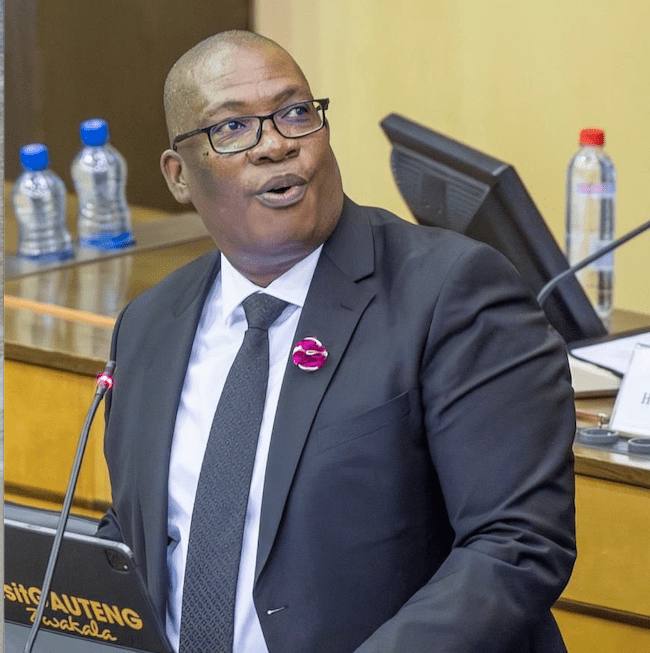Gauteng Premier Panyaza Lesufi has issued an apology to President Cyril Ramaphosa for the current state of the province, which has been plagued by water cuts, potholes, non-functional traffic lights, and ongoing service delivery issues.
During a meeting at the Johannesburg Council Chambers, President Ramaphosa expressed his disappointment with the Gauteng government. He emphasized the need for improvement and better alignment of provincial priorities with the priorities of the Government of National Unity (GNU).
This meeting marked the fourth engagement between the national executive and a provincial government, following similar engagements with Limpopo, KwaZulu-Natal, and Mpumalanga. The aim of these visits is to foster cooperation between different spheres of government in mutual trust and good faith.
After the meeting, Premier Lesufi spoke to journalists and confirmed that he had personally apologized to the president for the state of affairs in the province. He acknowledged the need to identify suitable venues for future meetings and areas that would leave a lasting impression on visitors to the country.
With Gauteng set to host the G20 leaders summit in November, questions have arisen about the province’s readiness to welcome world leaders. President Ramaphosa highlighted the importance of showcasing Gauteng and Johannesburg in the best possible light during the summit.
Ramaphosa emphasized that urgent action is required to address critical challenges identified in the State of the Province Address. These challenges include governance failures, financial mismanagement, crumbling infrastructure, crime, unreliable service delivery, unemployment, and poverty.
Premier Lesufi assured that the province is ready to host the G20 summit and committed to improving the situation. He acknowledged past criticisms of the government’s populist announcements and expressed confidence in the path forward.
Despite skepticism from opposition parties about the government’s ability to resolve long-standing issues in a short period, Lesufi remained optimistic. He stressed the importance of building a better Gauteng for all citizens and ensuring that the province’s problems are addressed for the benefit of everyone.
In conclusion, the Gauteng government is focused on transforming plans into practical interventions that directly benefit the people of the province. The commitment to addressing challenges and improving service delivery remains a top priority as the province prepares to host the G20 summit. The world of technology is constantly evolving, with new advancements and innovations being made every day. One of the most exciting areas of technology that is currently being explored is virtual reality (VR). VR technology allows users to immerse themselves in a computer-generated environment, experiencing sights and sounds as if they were actually there.
One of the key components of VR technology is the headset. These headsets use a combination of sensors, lenses, and displays to create a 3D virtual environment that users can interact with. The sensors track the user’s head movements, allowing them to look around and explore the virtual world. The lenses are used to focus the images displayed on the screens, creating a sense of depth and immersion. The displays provide the visual content, showing the user the virtual environment they are in.
There are several different types of VR headsets available on the market, ranging from standalone devices to high-end models that require a powerful computer to run. Standalone headsets are self-contained units that do not require any external hardware to operate, making them perfect for users who want a simple and easy-to-use VR experience. High-end headsets, on the other hand, offer more advanced features and capabilities, but require a powerful computer to run smoothly.
In addition to the headset, VR technology also relies on controllers to allow users to interact with the virtual environment. These controllers can take many forms, from simple handheld devices to more complex motion-sensing controllers that track the user’s movements in real-time. Some controllers even feature haptic feedback, providing users with a sense of touch and immersion in the virtual world.
One of the most exciting applications of VR technology is in the field of gaming. VR games allow players to fully immerse themselves in a virtual world, interacting with characters and environments in ways that were previously impossible. From first-person shooters to puzzle games, the possibilities for VR gaming are endless.
But VR technology is not limited to just gaming. It also has applications in a wide range of industries, from healthcare to education to entertainment. In healthcare, VR technology is being used to train medical professionals and simulate surgical procedures. In education, VR is being used to create immersive learning experiences that engage students in ways that traditional methods cannot. And in entertainment, VR is being used to create immersive experiences for concerts, movies, and other forms of entertainment.
Overall, VR technology has the potential to revolutionize the way we interact with computers and the digital world. As the technology continues to evolve and improve, we can expect to see even more exciting applications and advancements in the field of virtual reality. Whether it’s for gaming, education, or entertainment, VR technology is sure to play a major role in shaping the future of technology.








